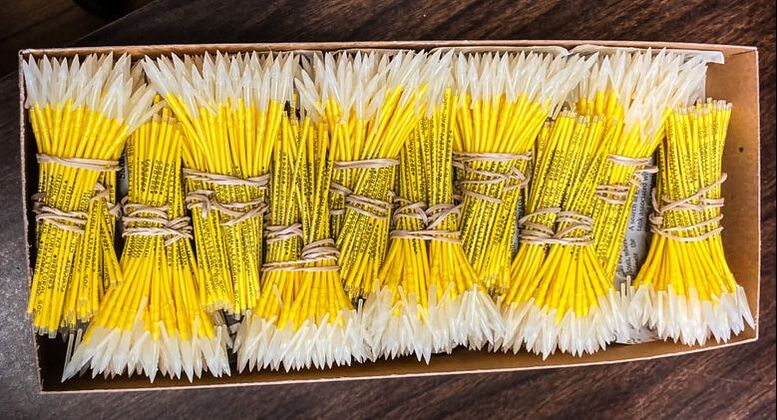|
As the American Littoral Society Fish Tagging Program approaches its 1 millionth tagged fish, we decided it was time to try something new in 2024: dart tags! These tags are a great improvement, not only to the anglers who will be using them, but to the fish that they will be tagging. As many of our taggers know, the Tagging Program has been using two types of tags for many years: spaghetti and lock-on tags. Both of these tags have served our program well – having been used on most of the nearly 980,000 fish our members have tagged since the program began in 1965. But one of the biggest downsides is that the tag has to go all the way through the fish, before being tied or locked by the angler. While these tags have been used for many years by the Fish Tagging Program, we’ve decided it’s time to try something new to us. Dart tags are not new tech for fish tagging, but they have become more common recently because they are easier for the user and the fish. Dart tags are shorter than either of the other two tag types and got their name from the plastic barb that protrudes from one end.  Littoral Society Dart Tags Littoral Society Dart Tags To use them, the tag is loaded into a dart tag needle with the barb end down. Then, on a Striped Bass for example, the tagger would lift a scale behind the dorsal fin and insert the tag just underneath it in the dorsal musculature rather than putting it through the entire fish. These tags can be used on most of the fish that are commonly caught by our fish tagging members. The barb holds the tag in place, allowing it to stream behind the fish as it swims along. These tags make the tagging process faster, while also decreasing the chances of fish mortality. Some taggers can actually tag the fish without even removing it from the water. Over the past couple months, Emily McGuckin, the Littoral Society’s Fish Tagging Director, conducted a great deal of research, while also talking with many different fisheries scientists and organizations, as well as staff from Floy Tag and Mfg., Inc, the company that makes our current tags. Based on the information collected, she decided that the benefits of dart tags outweigh any minor drawbacks they might have. One of the biggest concerns was the retention rate of these tags. However, available data indicates that fish tagged with dart tags have been healthily recaptured five to 10 years after initial application. One of our most prolific tagging clubs, the Hudson River Fishermen’s Association, has been using our new dart tags since early fall of 2023, so we have already begun creating a recapture and retention data set for both the new and old tags. We believe that while the dart tags will be a bit more expensive than the spaghetti or lock-on tags, it will be worth it! Dart tag kits will be sold in sets of 10 tags and 10 cards, with needles sold separately. We will also continue offering spaghetti and lock-on tags kits. 2/23/2024 01:02:38 pm
This will most likely be way more efficent and less stress for the fish. Thanks for making this happen.
JOSEPH ALBANESE
2/23/2024 01:17:29 pm
Ditto Chris! Comments are closed.
|
Archives
July 2024
Categories
All
|



